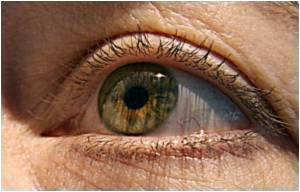
AMD is more common in women, blue-eyed Caucasians, patients with increased blood pressure and high cholesterol. According to statistics it is found that 30% of Canadians between the ages of 55 and 74 have some degree of macular degeneration while more than 40% of people 75 years and older have some degree of macular degeneration. The macula is a light sensitive tissue lining the back of the eye in the central area of the retina. This allows seeing the finer details such as recognizing faces, words in a book or images.
Asians have long been considered a low risk group for AMD, which is a leading cause of vision loss in older Caucasians. Since the number of elderly people is increasing in Asia, a major review by Tien Yi Wong, MD, MPH, PhD, and Singapore Eye Research Institute colleagues suggests that health systems there need to prepare for an onslaught of AMD.
Pooling results from nine standardized-diagnosis studies in five Asian populations (Japan, China, South Korea, India and Singapore), Dr. Wong’s group confirmed prevalence of early-stage AMD as 6.8 percent and late-stage as 0.56 percent, comparable to Caucasians at 8.8 percent and 0.59 percent, respectively. All rates pertain to people aged 40 to 79 years. Also, among those with late AMD, the "wet" (neovascular) form appeared to be more prevalent in Asians than in whites. Asian men were more likely to develop late AMD than white men and much more likely than Asian women.
The researchers speculate that Asian men may be more susceptible to polypoidal choroidal vasculopathy (PCV), abnormal development of blood vessels in the deeper layers of the eye. Whether PCV is a sub-type of AMD or a separate disorder remains controversial; it is also unclear whether PCV responds well to medications that inhibit abnormal blood vessel growth (anti-vascular endothelial growth factor drugs such as Avastin and Lucentis) that help many wet AMD patients keep their vision.
"Future studies should evaluate whether there are ’Asian forms’ of AMD and discern other racial/ethnic differences in Asian susceptibility," Dr. Wong said."Our meta-analysis could not adjust for important risk factors like smoking, common among many Asian men; nor did this study include all relevant Asian racial/ethnic groups," he added.
Advertisement
In three-quarters of the eyes treated the "bypass" was successful, and patients achieved significant vision gains by the 18 month follow-up. This study was also the first prospective, randomized trial to compare the bypass approach, called laser-induced chorioretinal venous anastomosis (L-CRA), with conventional treatment.
Advertisement
"The risk of complications from L-CRA should be weighed against the substantial vision loss faced by CRVO patients with standard treatments," Dr. McAllister said. "In future studies of L-CRA, optical coherence tomography (not widely available when our study began) would be another useful outcome measure for L-CRA effectiveness," he added.
Source-Medindia
GPL













